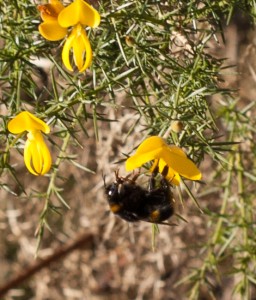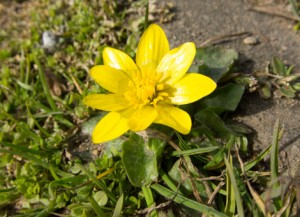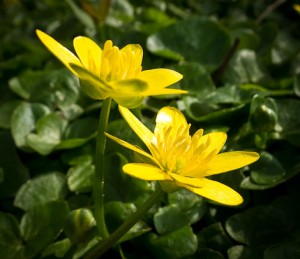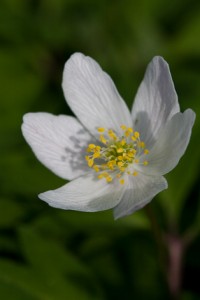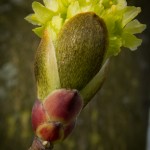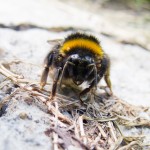Signs of spring have a been a bit few and far between so far this year, although I have managed to find some in the last week.
There has been a dearth of insects about – so far, apart from a probably very short lived peacock butterfly on 2nd January, I’ve seen a solitary brimstone, and five bees – all apart from one were Bombus terrestris (the buff-tailed bee). This is a good time of year (well, if it gets a bit warmer it will be) for learning to ID our bumblebees as for the next month or so there will only be queens of true bumblebees about. None of those pesky cuckoo bees or males to confuse matters. For more info on bumblebee ID, the Bumblebee Conservation Trust has loads of help. Even the views I did get of the bees were from a distance:
I found one lurking on some broom and a couple of others sunning themselves on trees.
However, it is probably a good thing that there aren’t many invertebrates braving the cold at the moment (although I was told today that 2015 temperatures have been normal for this time of year) as I’m not sure if it is just that I’m looking in the wrong place, but I’ve not seen many flowers in bloom yet. I have some snowdrops and hellebores in the garden, but by the roadsides I’m not even seeing many dandelions which flower for most of the year.
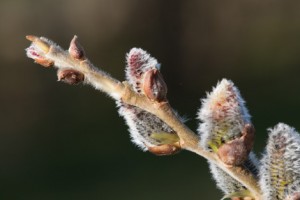 The willows are only just breaking out and it took me until the beginning of this week to find any celandines in flower – a bloom I usually associate with February. However, find them I did, and, what’s more I also heard my first chiffchaff of the year (about a week earlier than I expected) – trying to drown out the sound of traffic on the Bedford Road. So maybe spring is on its way after all.
The willows are only just breaking out and it took me until the beginning of this week to find any celandines in flower – a bloom I usually associate with February. However, find them I did, and, what’s more I also heard my first chiffchaff of the year (about a week earlier than I expected) – trying to drown out the sound of traffic on the Bedford Road. So maybe spring is on its way after all.
